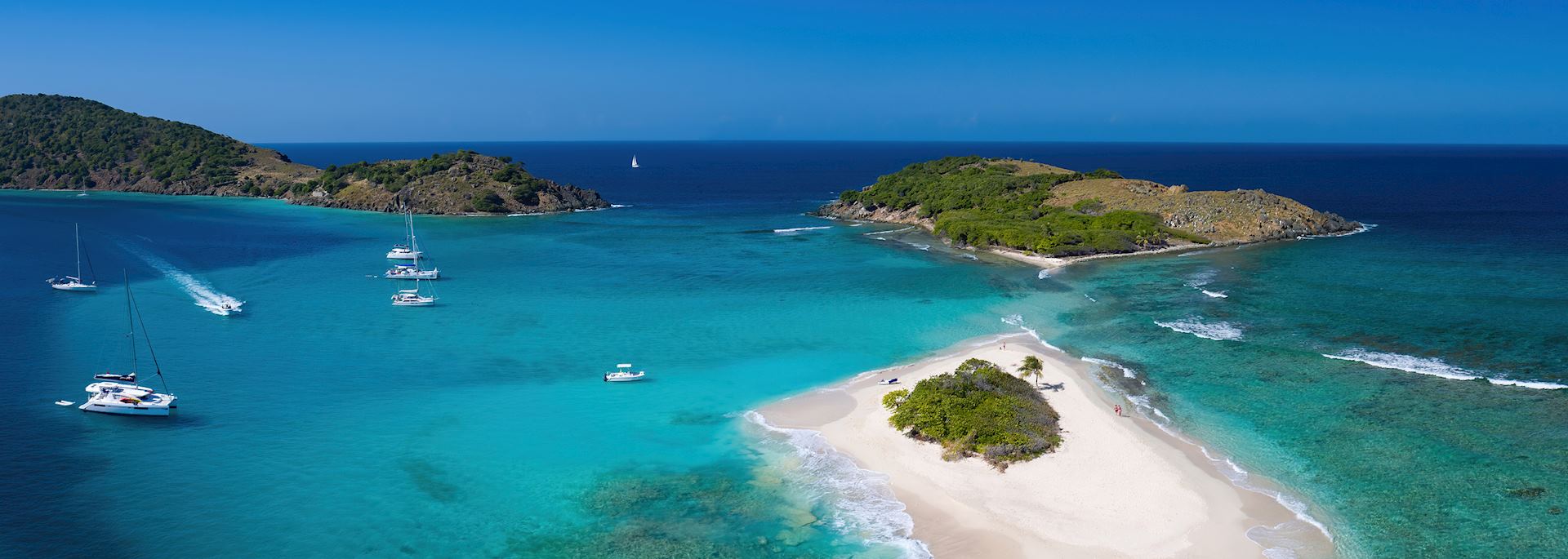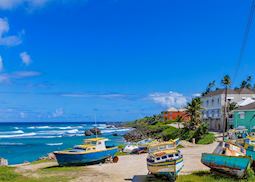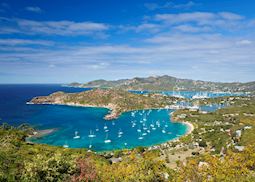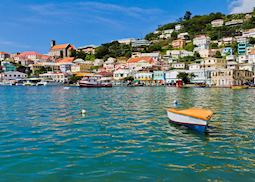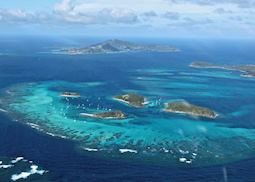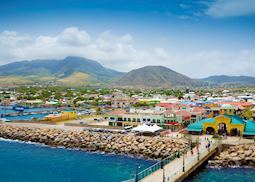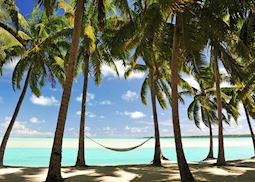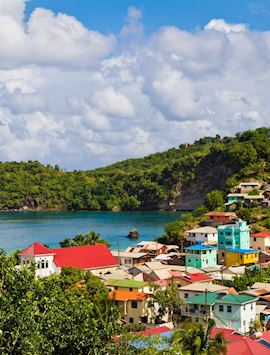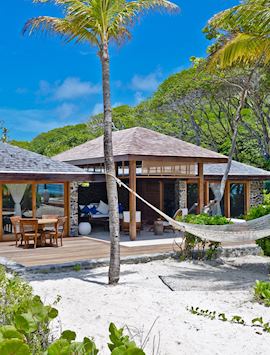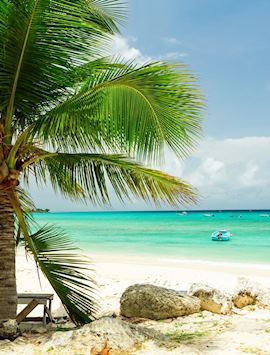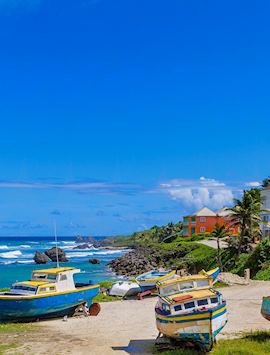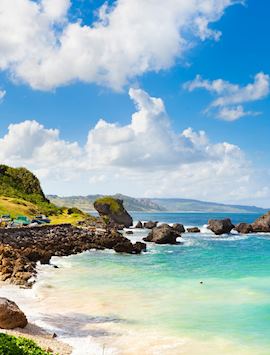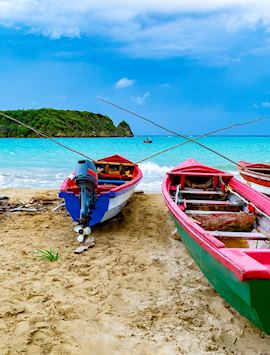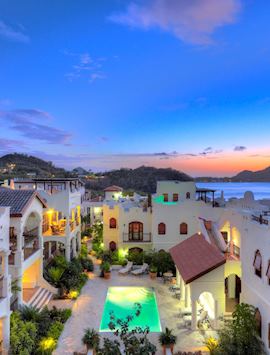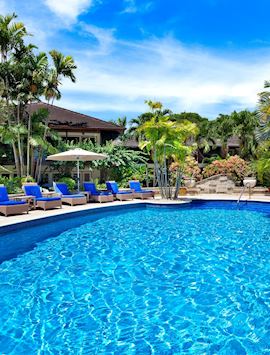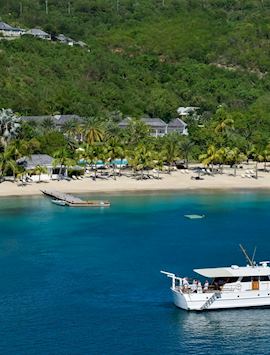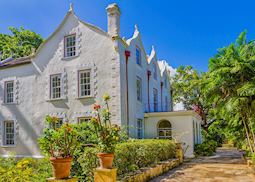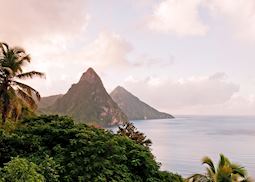
The images usually conjured of the Caribbean are palm trees, sweeping sandy beaches, steel pan music and locally made rum on tap. While these are all undeniably true, we’d also encourage you to look further. Our specialists can help you explore each island’s charm and appeal, from suggesting a climb to a British naval fortress on Saint Kitts to recommending Michelin-starred restaurants on Barbados or a private island in Saint Vincent and the Grenadines.
The best way to get a real sense of the region’s diversity is by visiting several islands on your Caribbean holiday. You can island-hop between our hand-picked selection, spending time in a cocoa estate on Saint Lucia before lazing on a deserted cove on Bequia or yachting through the waters of the British Virgin Islands. The ultimate way to island-hop through the Caribbean is by ship, sailing on an elegant clipper through the Windward Islands. Along the way, you can hike the Piton peaks on Saint Lucia, walk through rainforests on nature-rich Dominica, and snorkel in the crystal-clear waters of the unspoiled Les Saintes islands off Guadeloupe.
who's been there
-
01993 838 92501993 838 275
- Make an enquiry
Where you can travel with us in the Caribbean
Our specialists can help you plan your trip, individually focusing on your tastes and interests, to the destinations below.
Trip ideas in the Caribbean
These itineraries will give you a starting point for what your trip could entail. They cover routes that we've found work particularly well and feature some of our favourite places to stay. Treat them just as inspiration, as each trip is created uniquely for you and there are many more options available.
Our expert guides to exploring the Caribbean
Capturing our specialists’ extensive travel experience in the Caribbean, these guides share inspiration, recommendations and our honest advice for how to enjoy the best of what the region can offer in the most authentic ways. From the wealth of options we describe, you can narrow down the choices and start to shape your own trip.
-
![My travels in St Vincent and the Grenadines]()
My travels in St Vincent and the Grenadines
Trips across the Caribbean could see you driving through pastel-roofed villages, walking along sandy coves and visiting untouched archipelagos. With a focus on Bequia, Kate’s video brings some of the Caribbean’s best experiences to life.
-
Boutique hotels of the Caribbean ![Saint Lucia]()
Boutique hotels of the Caribbean
Boutique hotels of the Caribbean
You can opt for an intimate experience in the Caribbean by staying at boutique properties. Hidden Beaches specialist Annabel picks out some of the best hotels, from a cocoa plantation in Saint Lucia to one of Nelson’s beloved spots on Nevis.
Read this guide -
Touring in the Caribbean: trips to get you out of the resorts ![St George's, Grenada]()
Touring in the Caribbean: trips to get you out of the resorts
Touring in the Caribbean: trips to get you out of the resorts
Known for beach holidays, the Caribbean is often overlooked as a multi-stop destination for wider exploring. Caribbean specialist Annabel picks out her top three trip ideas to give you an idea of what’s possible, if you want to get beyond your resort.
Read this guide -
In-depth Barbados: best experiences beyond the beach ![St Nicholas Abbey, Barbados]()
In-depth Barbados: best experiences beyond the beach
In-depth Barbados: best experiences beyond the beach
Though it’s known for its bright-blue waters and soft-sand beaches, there’s more to Barbados than Caribbean pleasures, says our specialist Annabel. You can eat with the locals on Friday night, wander in a botanical garden and discover its rum-soaked colonial history.
Read this guide -
What to do in Antigua: our highlights guide ![Aerial view, Antigua]()
What to do in Antigua: our highlights guide
What to do in Antigua: our highlights guide
Antigua is best known for the many beautiful beaches that line her shores, as well as the islanders' fondness for cricket. There are plenty of other activities to enjoy, such as diving and sailing. Here we highlight just a few.
Read this guide

